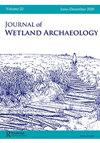From Wet Lands to Dry Spaces (and Back Again): Archaeological Perspectives on the Use, Drainage, and Restoration of the Kankakee Wetlands, USA
Q1 Arts and Humanities
引用次数: 2
Abstract
ABSTRACT The Kankakee River in the midcontinent of the United States was once home to one of the largest wetlands in the world, the Grand Kankakee Marsh, as well as countless smaller wetlands along its margins. Beginning in the mid nineteenth century, over 200,000 ha of the Marsh was drained along with an untold number of smaller wetlands. Yet, while wetlands were devalued in the nineteenth century, these ecosystems were prized hunting, plant collection, and horticultural grounds prior to Euro-American settlement, and are increasingly recognized for their ecosystem services today. This paper investigates the Kankakee wetlands and their use by late precolonial Indigenous communities using data compiled from a large, public archaeological project conducted at an active restoration site, Midewin National Tallgrass Prairie, in Illinois. Findings provide key floral and faunal reference data, highlight the land use strategies of this seventeenth century Native American agricultural community, and indicate increased precipitation trends favourable to the success of wetland restoration.从湿地到干燥空间(再回来):美国坎卡基湿地的使用、排水和修复的考古学视角
摘要位于美国中部大陆的坎卡基河曾经是世界上最大的湿地之一大坎卡基沼泽地的所在地,以及其边缘无数较小的湿地。从19世纪中期开始 公顷的沼泽地和数不清的小湿地一起被抽干了。然而,尽管湿地在19世纪被贬值,但在欧美定居之前,这些生态系统是珍贵的狩猎、植物采集和园艺场所,今天它们的生态系统服务越来越受到认可。本文利用在伊利诺伊州Midewin National Tallgrash Prairie的一个活跃修复地点进行的大型公共考古项目汇编的数据,调查了坎卡基湿地及其被殖民前晚期土著社区使用的情况。研究结果提供了关键的动植物参考数据,突出了这个17世纪美洲原住民农业社区的土地利用策略,并表明降水量的增加趋势有利于湿地恢复的成功。
本文章由计算机程序翻译,如有差异,请以英文原文为准。
求助全文
约1分钟内获得全文
求助全文
来源期刊

Journal of Wetland Archaeology
Arts and Humanities-Archeology (arts and humanities)
CiteScore
1.40
自引率
0.00%
发文量
6
期刊介绍:
The Journal of Wetland Archaeology publishes a wide range of contributions in all fields of wetland archaeology. It includes scientific and methodological features, geoprospection, environmental reconstruction, wetland hydrology, cultural aspects of wetland archaeology, as well as conservation, site management, legislation, and site protection. All periods and all geographic regions are covered.
 求助内容:
求助内容: 应助结果提醒方式:
应助结果提醒方式:


